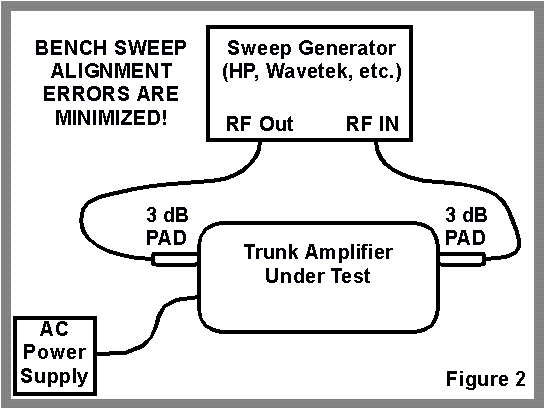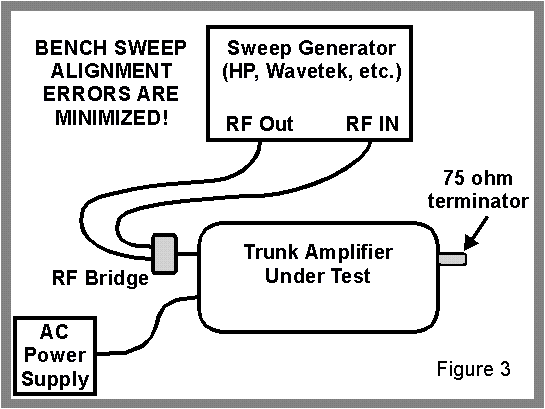Testing the input or output impedance match of the RF modules in the housing requires an RF bridge and the removal of the inline pads from the test setup. If the test cables were of high quality, the pads would not be needed anyway. Figure 3 depicts the typical setup when using an RF bridge to test return loss / impedance match. The HP8711 network analyzer used here at QRF has the return loss bridge function built into the RF output port of the machine itself. The digital signal processing eliminates the cable errors of the high quality cables which are provided by HP with the unit.

